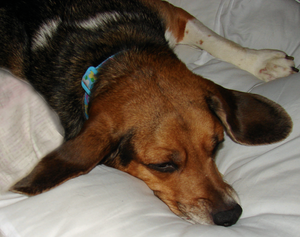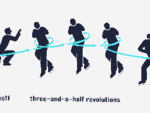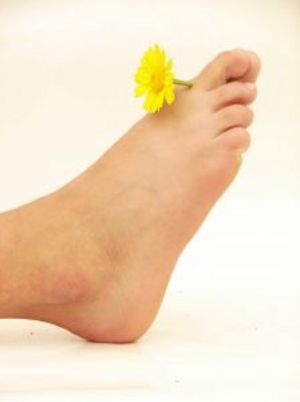Learning that your dog has an ACL injury can be very overwhelming, not only emotionally but perhaps at some point financially. Understanding what you can expect in the coming weeks and months may give you peace of mind. Below you will find some information I have complied, that may help you on your way to understanding what is in store for you, your dog and your family.
What is an ACL?
The ACL or Anterior Cruciate Ligament, is the ligament in a dog’s knee that connects the tibia and femur. The ACL stabilizes the knee to reduce stress on the knee joint when there is movement in the knee.
What is an ACL injury?
When the ACL or Anterior Cruciate Ligament ruptures or tears, it causes the tibia and femur to be able to move freely against each other damaging the knee joint. If left untreated, this can cause permanent damage, including permanent lameness of the leg.
How does an ACL injury occur in dogs?
There are endless ways a dog can injure its’ ACL. Something as simple as turning the wrong way or slipping on a tiled floor can cause an ACL injury. This sort of injury can happen to dogs of all ages and at any level of fitness. However, it is said that age and weight can play a factor in these injuries.
What are the signs and symptoms of an ACL injury?
The signs and symptoms of an ACL injury will vary from dog to dog. However, you may notice your dog is limping or holding up the affected leg. Also, there may be some swelling in the knee area of the leg. The signs and symptoms may come and go depending on the level of activity your dog has had on any given day.
How is an ACL Injury treated?
There are several ways to treat an ACL injury. Depending on the severity of the injury, your veterinarian will recommend the best course of action. If surgery is required, your veterinarian will most likely suggest one of the following surgeries, all of which are commonly preformed in veterinary clinics across the country.
- In the Conventional surgery, the veterinarian uses a drill to drill small holes in the dogs’ leg bone. Then he or she threads a “fishing line” type material through the holes, to temporarily stabilize the joint while scar tissue forms to permanently stabilize the joint.
- In the Tibial Tuberosity Advancement or TTA, the veterinarian removes a piece of bone from a none-weight bearing area and moves it into the knee. That piece of bone will be used to change the angle of the tibial plateau, thus changing the way it relates to the patellar tendon and stabilizing the knee.
- In the Tibial Plateau Leveling Osteotomy or TPLO, the dogs’ leg bone is cut, rotated and secured in its new position with a metal plate. Doing this levels the tibial plateau which eliminates the need for an ACL or Anterior Cruciate Ligament.
What is the expected recovery time?
Each of these procedures has its’ own recovery time. If indeed surgery is needed, you can expect your dog to take anywhere from 6-8 weeks to recover.
What is the cost of ACL surgery?
The cost of the over all treatment to repair the ACL tear will vary depending on your veterinarian and the procedures preformed on your dog. You can expect the cost of each surgery to cost between the following ranges.
- The Conventional surgery ranges between $500 USD and $1000 USD.
- The Tibial Tuberosity Advancement or TTA ranges between $2500 USD and $3000 USD.
- With the Tibial Plateau Leveling Osteotomy or TPLO ranges between $2500 USD and $3000 USD.
It’s important to keep in mind that there are many costs involved in the diagnosis and treatment of an ACL injury. Your pet may require x-rays, medications, and more. Talk to your veterinarian about the over all expected cost of the treatment, so that you can make plans to cover the cost. Also, if cost is an issue, talk to your veterinarian about a possible payment plan. Most veterinarians have some sort of payment plan option. If not, they may be able to refer you to a veterinarian that does offer a payment plan.
What is the prognosis for a dog after being treated for an ACL injury?
Every case is different, so the outcome of each surgery is different as well. That said, eHow.com reports that the over all recovery rate of ACL surgeries in dogs is around 90%. Though it is extremely important that you follow the instructions given to you by your veterinarian. Something as simple as letting your dog walk a little too far can endanger the over all outcome of your dog’s surgery.
Even though an ACL injury can be overwhelming, time consuming, and physically/emotionally painful, it is worth it. With a lot of patience and care, your dog will be back to normal in no time.





